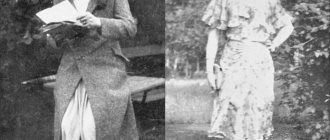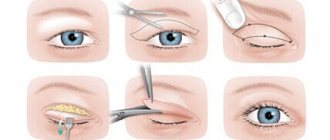It is generally accepted that the first doctor to perform plastic surgery, rhinoplasty, was London surgeon Joseph Carpue. In 1814, he restored his patient's nose by transplanting a piece of skin from his forehead. In fact, the history of plastic surgery began much earlier - back in Ancient Egypt.
The problems of amputated noses and cleft lips were then solved by court doctors and priests, and they did it very successfully. Despite the fact that medicine itself at that time was in its infancy, which indicates a good indicator of the professionalism of the surgeons of Ancient Egypt. In addition to the doctors of the pharaohs, plastic surgery was used in Persia and Arabia. The ancient Romans practiced the removal of excess fat, and writings found in China dating back to the mid-10th century BC describe operations to reshape the nose and lips. Also worthy of attention are the operations performed by ancient Indian doctors to restore lips, ears and noses maimed in battle or cut off by court order. Joseph Carpue's work on nose reconstruction almost completely repeated the operations performed by Indian doctors in 600 BC. India in those days was famous for its numerous and brutal internecine wars, in which it was customary to mutilate captured soldiers by cutting off their noses or ears, so that it would be easier to find them and return them in case of escape. Parts of the face were also cut off as war trophies. Therefore, surgical intervention was in great demand and even put on stream. The first Indian doctor who described in detail the course of such operations in his writings was the surgeon Sushata Samgita. Back then, few people thought about simply becoming more beautiful with the help of such an operation.
History of plastic surgery founders
The Italian doctor Gaspar Tagliacozzi is considered the founder of plastic surgery in Europe. In 1597, he wrote a treatise on the plastic surgeries he performed and presented it to the scientific community. It talked about the restoration of body parts given by nature, but taken away by fate. About operations performed “not for the sake of pleasing the eyes,” but to give hope to a person who has been injured. Those who familiarized themselves with the works of Tagliacozzi noted that the surgical methods he used, given the weak development of medicine at that time, can be considered revolutionary. But, despite the fact that the Italian surgeon was far ahead of his time, his contemporaries considered such medical intervention to be contrary to the laws of God, and strictly forbade him to practice. This ban quickly spread beyond Italy, outlawing plastic surgery in almost the entire Old World. This led to the fact that until the beginning of the 10th century, not a single reconstructive surgical plastic surgery was performed in Europe, at least not officially. Although operations were still carried out illegally, they were performed by military surgeons, restoring the faces of soldiers damaged in battle. The tense situation on the battlefield did not give them the opportunity to keep records of their medical achievements, and the development of this branch of medicine was, one might say, “frozen” for more than 200 years.
Together with plastic surgery to a bright future
Fortunately, reconstructive surgeries, which surgeons performed to improve the quality of life of those who could not get help themselves, also became widespread. It is now becoming common for surgeons to donate their time to help children living in disadvantaged areas of the world and suffering from severe birth defects. Many surgeons owe it to their cosmetic practices for this opportunity to help those in need.
This display of altruism has in turn helped improve public perception of plastic surgery and foster the idea that reconstructive and cosmetic surgery is designed to improve people's quality of life.
Over the past five years, the number of plastic surgeries performed in the world has increased by an average of 21% per year, and continues to grow (albeit at a slower pace) even now, with all the uncertainty of the economic situation in the world.
History of plastic surgery: development
The 19th century is considered the time of a real breakthrough in the history of plastic surgery, during which hundreds of published scientific works on the topic of reconstructive and aesthetic operations appeared. They mentioned not only interventions related to the noses and ears, but also a host of other operations aimed at correcting natural defects in appearance. The ban on operations was lifted and many experienced surgeons began to practice this activity. The origin of the term “plastic surgery” dates back to 1798. This definition of such medical interventions was coined by the then famous natural scientist Desolton. The First World War served as another impetus for the development of reconstructive surgery, since doctors had plenty of “material” for work and research. Every day soldiers were brought to front-line hospitals and medical centers with various bodily injuries that had to be eliminated so as not to leave a person as an outcast from society for the rest of his life. Of course, we were talking not only about damaged noses or lips: the flow of wounded during active hostilities was so great that many of them simply did not have time to get to the operating table. Some soldiers died on the way to the first aid station or while waiting their turn to see a doctor. It should be noted that at the very beginning of the war there were no special medical surgical centers for the wounded, and all operations were carried out by ordinary doctors and in general tents. Not every one of these doctors knew how to treat a gunshot wound, let alone serious wounds and injuries. Therefore, the need soon arose to create specialized surgical departments, staffed only by surgeons with sufficient experience.
SMAS lifting
Rejuvenation, in which the skin looks too tight and facial features become unnatural, is a thing of the past. The usual facelift has been replaced by SMAS lifting, which leads to a fundamentally different result.
This is explained by the fact that during this operation, not only areas of loose skin are excised, but also muscles, stretching of which is the main cause of aging, are sewn together. As a result, the patient “loses” about 15 years and then ages naturally, not as rapidly as with a conventional facelift (read also: “The secret of eternal youth: surgical and non-surgical lifting”).
History of plastic surgery in faces
Today's plastic surgery is one of the largest fields of medicine, including not only direct operations, but also extensive research activities. Among the founders of the trends in this area is the English doctor Harold Delf Gillies, from the city of Sidcup, who practiced at Queen Mary Hospital. He is considered the founder of plastic reconstructive surgery. And the first narrowly focused aesthetic surgeon is the German doctor Jacques Joseph, who performed operations to correct the shape of the ears, with excessive “protrusion,” and to correct the shape of the nose using the endonasal (intranasal) method.
Liposculpture
Getting rid of fat “traps” in the abdomen, back and arms still remains relevant. But if previously fatty tissue was disposed of after liposuction, now it is used to correct other areas: mammary glands are enlarged, dimples on the buttocks are filled, and used instead of fillers to combat wrinkles on the face.
It is worth noting that this method is effective and safe, and the results of such an operation are truly long-lasting. It turns out that we are modeling a new body, but we are not using synthetic drugs and foreign objects for this, to which the body will have to adapt (and this does not always go smoothly).
History of plastic surgery: “Golden time”
Having mentioned Jacques Joseph, it should be noted that he not only conducted an active practice, but also wrote a scientific work that was published in the 30s of the last century. A detailed description of the methods of aesthetic surgery has become a guide for many doctors practicing in this field. In those years when the world powers and their scientists had already recovered from the First World War, and the outbreak of the Second World War was still far away, medicine, including plastic surgery, experienced a real heyday. Just a few years after the publication of medical publications by Jacques Joseph, the French surgeon Raymond Passot developed methods for tightening sagging facial skin and correcting the mammary glands. He also pioneered the use of sterile horsehair to stitch wounds after surgery to achieve more aesthetically positive results. Until the Second World War came, many other areas of medicine were also actively developing. And the beginning of the war posed new challenges for plastic doctors: they had to treat soldiers from burns and frostbite, eliminate the consequences of fractures and serious wounds, and remove shell fragments from body parts. All forces were involved in such procedures - doctors of different fields and specializations, including plastic surgeons. Such extensive and long-term experience allowed them to accumulate new knowledge and develop new technologies for conducting operations, the possibility of which was previously unthinkable. That is why that period, until the mid-80s of the 20th century, is usually called the “golden time” of plastic surgery. In those years, treatment methods were developed, many of which are actively used by doctors today. This includes complex microsurgical interventions and various corrections of congenital defects in appearance, and a number of ways to eliminate signs of age.
Blepharoplasty
The absolute trend in recent years is fat-sparing blepharoplasty. During such an operation, fatty tissue is redistributed and added, for example, to the area of the nasolacrimal groove in order to correct depression and bruising, as well as to further rejuvenate the area around the eyes. Patients may also ask that a lot of soft tissue not be removed during upper blepharoplasty to keep the results of the surgery subtle and the face looking natural.
History of Plastic Surgery: Present
Considering the historical facts of plastic surgery, it is necessary to mention its important direction - aesthetic surgery. Today, operations to eliminate defects in appearance are quite affordable for almost everyone. For example, 30 years ago only wealthy and public people - actors, politicians and pop stars - could afford to have their face tightened or their breasts increased. Now, such operations can be considered ordinary, and any working person is able to afford to pay for surgical intervention, and without particularly limiting himself in food and without deviating from his usual lifestyle. Even with a small level of income, if you wish, you can save up funds to correct the shape of your nose, ears, eyelid lift or face contour, and other desired manipulations that will make you more attractive and younger. Due to its accessibility, aesthetic surgery is widely in demand, and many women prefer correcting their appearance instead of a new fur coat or a trip to hot countries. Moreover, modern surgical techniques are completely safe and guarantee excellent results.
Many representatives of the fair sex believe that investing money in their own attractiveness is the most effective investment. And such a wide demand gives rise to a lot of offers. Medical centers working in this direction have opened in all cities of our country, and more and more services are offered in the field of plastic surgery with an aesthetic focus. Medical centers are equipped with the most modern and technologically advanced devices and instruments, work efficiency increases, and the experience of doctors increases. The same situation is being created in other countries. According to recent data, there are more than 5,000 highly qualified plastic surgeons in the United States alone. Moreover, in the 60s of the last century there were less than one thousand of them. Today, physical perfection is equally popular all over the world, as it implies a more successful and happy life.
Mammoplasty
Surely everyone remembers how, about 10 years ago, girls began to enlarge their mammary glands en masse with the help of implants, and anatomically correct breasts were replaced by hypertrophied sizes in the style of Pamela Anderson.
Now smaller implants and teardrop-shaped implants are relevant. Moreover, owners of natural large breasts turn to plastic surgeons to reduce them using reduction mammoplasty: a bust of size four or more causes inconvenience and creates additional stress on the spine.
Favorite operations of Lyubov Orlova
Although little was said about plastic surgery in the USSR, theoretically many could afford it. For example, according to data from open sources, eyelid surgery during Stalin’s cost 5-15 rubles, a facelift - 7, and rhinoplasty - 15-30. And this is with an average salary of 70-90 rubles per month. And plastic surgeon Alexander Shmelev even starred in a cameo role with his beloved patient Lyubov Orlova in the film “Starling and Lyra.”
“Services for changing appearance and rejuvenation were in great demand among representatives of creative professions, bohemians, and politicians. Soviet film star Lyubov Orlova had a facelift and blepharoplasty. USSR Minister of Culture Ekaterina Furtseva , actresses Nonna Mordyukova and Lyudmila Gurchenko ,” says Tumakov.
Handicraft plastic. What materials do underground “surgeons” use? More details
Plastic surgery in African style
During the next excavation of graves within Africa, archaeologists were horrified and shocked by the discovery. They discovered the bodies of ancient African men whose little finger and thumb had been deliberately mutilated. They were wearing some kind of devices that were tightly held on the phalanges located parallel to the palms, precisely by the fractures. Why this was necessary, how such deformation helped - historians have never figured out. It was clear that it was impossible to hunt, fish, or do any work with such hands. Scientists agreed on one thing - the terrible deformation may have caused the extinction of many tribes.
Interesting fact: Scar removal work appears to have been popular in ancient Rome because mutilation was a disgrace to the individual. The scars meant that he was a fighter who had escaped from the battlefield, otherwise he would have died, or he was a slave who was whipped with rods and ran away from his master.
Ancient lip surgery
Congenital pathologies have plagued humanity since the very beginning. And such a defect as a cleft lip also upset parents and disfigured a person’s face. In Ancient Egypt, as it turned out, they decided to fight pathology with surgical methods. This is evidenced by excavation data. Experts have discovered several mummies whose upper lips were sewn shut. Moreover, the specialists of those times performed the work so skillfully, using the finest threads from animal veins, that the seam is practically invisible.
[product_block id=”10988"]
More recently, archaeologists carefully studied the discovered mummy with surgical intervention. Apparently, they tried to correct her protruding ears, but were unsuccessful. The ears were pressed to the person's head with several large stitches, which led to inflammation and infection of the patient's blood. And so he died. Considering that, according to the law, such a “mountain” doctor had to be executed, which apparently happened. After all, the mummy most likely belonged to a wealthy class, and for them the law worked flawlessly.
Interesting fact: the impetus for the development of plastic surgery was the Second World War. Soldiers were injured, and their appearance was disfigured by bullets, mines, grenades, bombs, bayonet knives, diseases and other wounds. It cannot be said that doctors advocated for beauty of appearance; rather, they fought for the safety of human life and along the way tried to level out deformities.
Ancient Roman plastic
It's no secret that it was in Ancient Rome that the cult of the human body especially flourished. Let's remember the Renaissance with sculptures of gods and nymphs. Each work is stunning reliefs and sculptures, the unique beauty of the male and female body. Their faces were also impeccable, with large eyes, a straight nose, beautiful ears, a prominent and sensual mouth. And, of course, being ugly during this period was simply a sin.
We are not talking about servants and slaves; they were not even considered people at all. But members of dynasties, representatives of wealthy classes sought to use the services of the best doctors. Not only ladies, but also men stood in line to join them. The first, as now, wanted to be thin and slender, while having voluminous breasts. As for the stronger half, they often also straightened the nose and reduced the volume of the mammary glands. Yes, yes, this happened quite often in ancient Rome. Constant holidays, fatty foods and a sedentary lifestyle have become the cause of obesity. Of course, the nobles practically did not walk the streets, they were carried on stretchers. Some even used the services of porters in their homes.
I recommend reading: The psychology of fighting excess weight.
Medical certificate: one of the most famous healers of Antiquity, Marcus Lucius, left a mention of one of the operations. He was approached by a wealthy nobleman, whose son suffered from gynecomastia - enlarged mammary glands. This drawback became a problem, since the guy wanted to grow up the career ladder, but the “feminine” attribute hindered him. Despite the doctor's experience, the operation was unsuccessful. Blood poisoning occurred, sepsis and the guy died. And, unfortunately, there were a large number of such cases. But this did not stop people, they continued to turn to doctors. To stop deaths, the country's authorities introduced a ban, and issues with breast surgery were closed for several centuries.
Such operations were once continued to be performed by the German doctor Adolf Geller, who practiced in the 17th century. But given the fact that there were not so many people with gynecomastia, and the cult of a beautiful body was a thing of the past, operations were not popular.
Interesting fact: rich representatives of Ancient Egypt sought to take advantage not only to look beautiful. According to their beliefs, the beauty of the body should have been preserved even after death. Scientists were convinced of this after studying the body of Pharaoh Ramses II. It was revealed that after his death, a bone was inserted into his nose and his sinuses were filled with grain. And as we know, over time, the tissues of a corpse rot and the nose collapses. It turns out that a beautiful appearance was supposed to help in the afterlife, and certain details of the rich man’s toilet were also intended to help him be recognized.
Achievements of modern plastics
For many decades, it was possible to improve the shape of the breast only by using silicone implants. And it was believed that there would be no other method for a long time. But scientists from the Melbourne Institute of Microsurgery have developed a real sensation.
Conducting experiments on animals, they grew mammary glands in a test tube and returned them to the female’s body as an implant. This method is even safer because they have a common structure and immune system. There is no rejection or other negative reactions. The details of the discovery are still kept completely secret, but several women who have undergone breast removal surgery due to cancer have already expressed a desire to go under the knife of these specialists.
General trend: maximum at a time
We all strive to save our time, and this also applies to plastic surgery. Therefore, if necessary, many try to perform several operations at once.
This is beneficial from many points of view. Firstly, general anesthesia is performed once. There is also only one rehabilitation period, and the patient does not have to go through the recovery phase again, which is full of inconvenience and pain.
Finally, this approach allows you to save time and money. As a result of several surgical interventions, a person gets a wow effect, because his life begins literally with a clean slate.
It is important to note the main thing: the desire for naturalness is the most correct strategy when contacting a plastic surgeon. You shouldn’t go under a scalpel for the sake of a radical change in appearance, because fashion trends are a passing thing (read also: “5 salon anti-age procedures that will replace plastic surgery”).
Maxim Petrovich Vashin is a plastic surgeon at the Institute of Plastic Surgery and Cosmetology.








